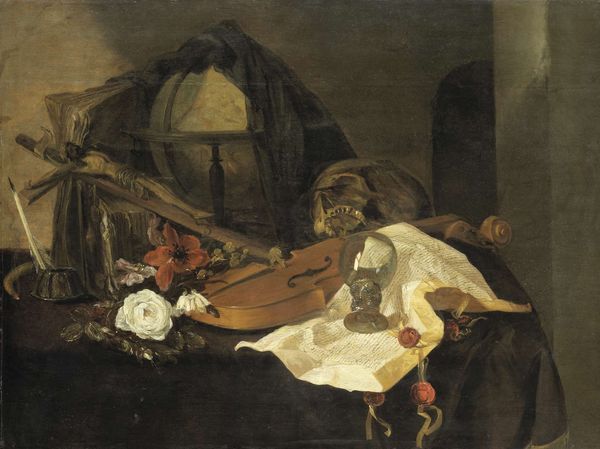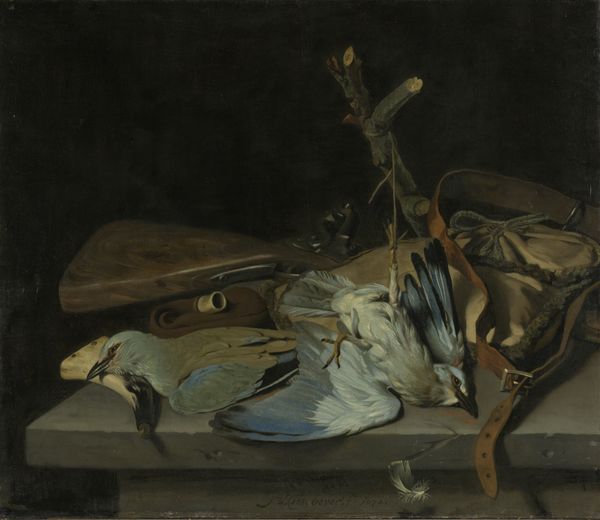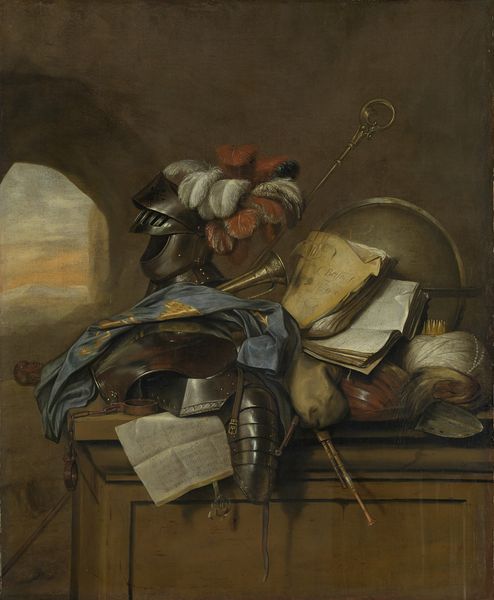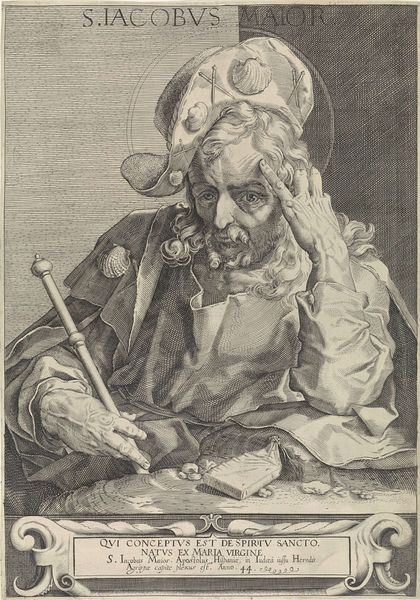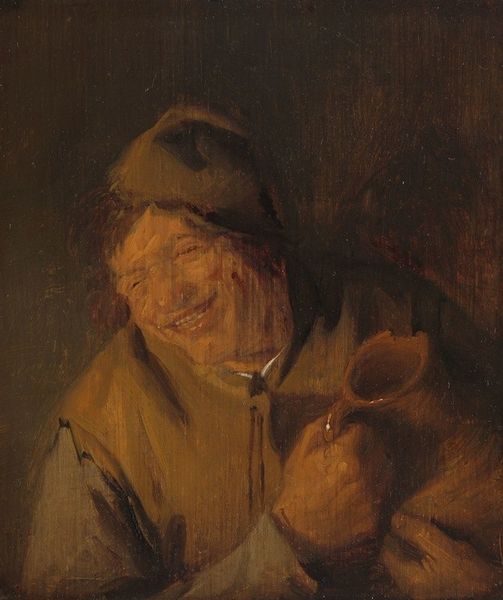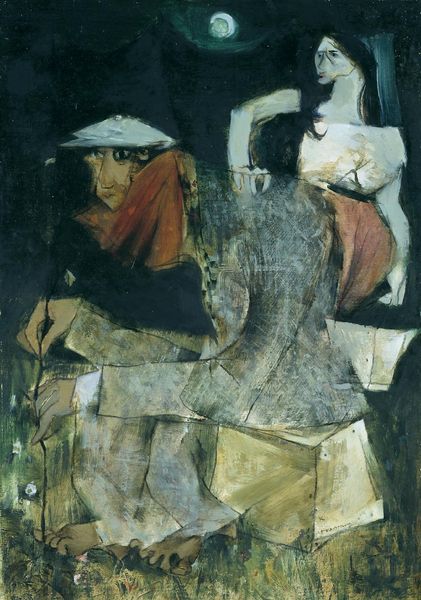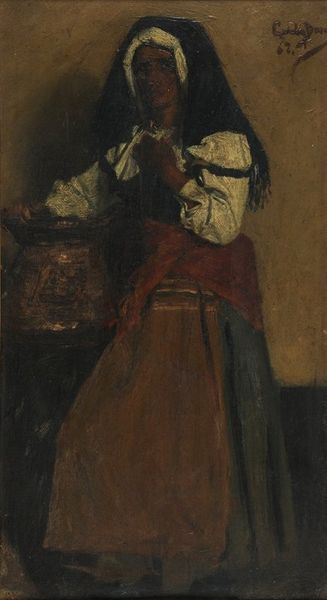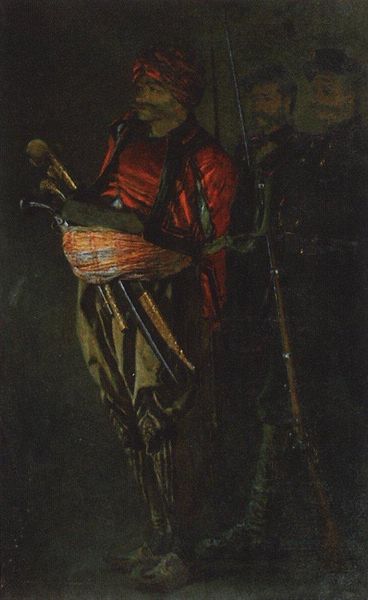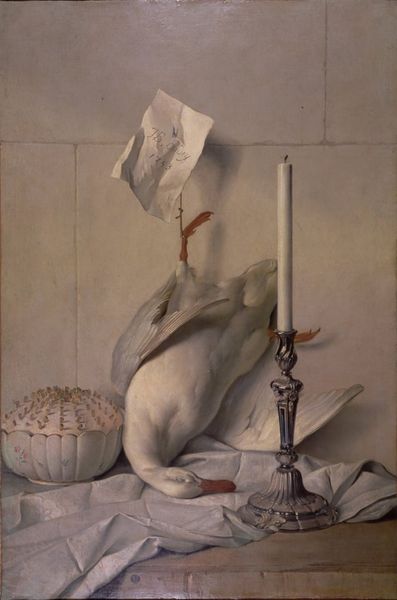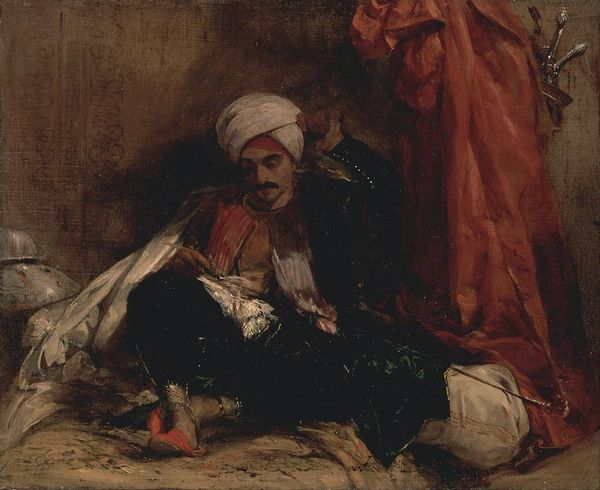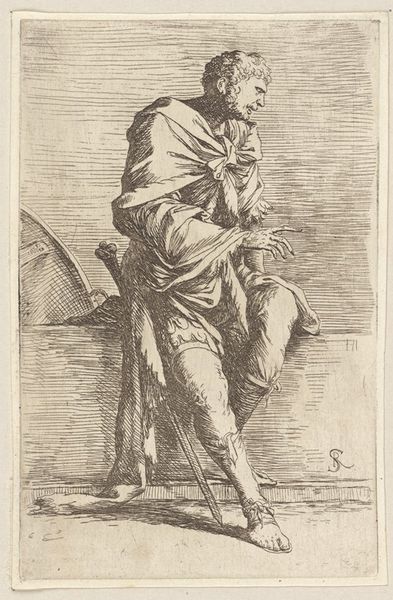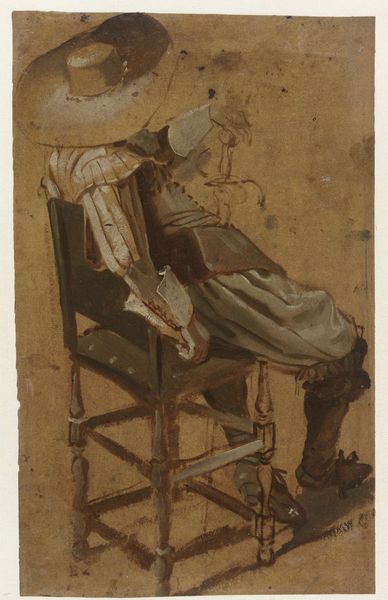
oil-paint
#
baroque
#
oil-paint
#
oil painting
#
flemish
#
genre-painting
Dimensions: height 64 cm, width 54 cm, depth 8 cm
Copyright: Rijks Museum: Open Domain
Curator: Looking at William Gowe Ferguson’s “Still Life with Birds and Implements of the Hunt” from 1684, I'm struck by its stark presentation of death. It feels almost morbid, wouldn't you agree? Editor: It certainly has a somber air about it. The subdued palette, the limp forms...it does evoke a strong sense of finality. Ferguson's use of oil paint seems very adept at rendering the texture of feathers and fur, heightening the realism, and perhaps that feeling of morbidity as well. Curator: Indeed. These still lifes weren't merely decorative; they reflected societal norms and power structures. Think about the rise of the Flemish merchant class, their access to goods and leisure… Hunting, as depicted here, became an activity associated with status and privilege. Editor: So, you're saying the painting itself functions as a kind of status symbol, displaying the fruits—or rather, birds—of one’s labor and access to land and resources? The tools also seem particularly rendered and arranged, speaking perhaps to their craftsmanship and value beyond pure functionality. Curator: Exactly. Furthermore, consider how these images, often commissioned by the wealthy, perpetuated this ideal of aristocratic life. It subtly reinforced the existing hierarchy through art. Also, Flemish Baroque paintings typically include some moralizing aspect related to excess. Is this such a work, here? Editor: It's interesting, though the excess here is not one of the "domestic sphere" for the emerging Bourgeois, as in some other examples from this period; so while excess and social roles are highlighted, I wonder what impact the different settings may have on reception? Curator: And how the museum displaying the work shapes its ongoing reception? I suppose this work raises issues about ecological responsibility too, depending on when it is viewed, in what cultural environment. Editor: Yes, absolutely, today's audience brings entirely new readings to the table regarding hunting, sustainability, and animal rights, giving the artwork an unanticipated sociopolitical role centuries later. Curator: Fascinating how time transforms art into an accidental reflection of our evolving values, then! Editor: Exactly. Thinking about materiality, power, and shifting cultural contexts gives you such a multi-layered interpretation. I appreciate the chance to engage with these new dialogues.
Comments
No comments
Be the first to comment and join the conversation on the ultimate creative platform.
